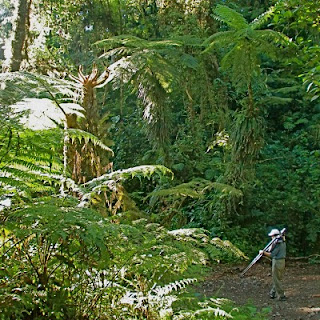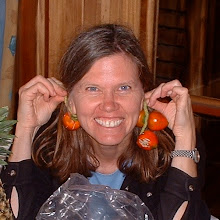It's less than 8 km. (5 miles) from our house in Cerro Plano. We have even walked most of the way but usually we take a taxi which takes about 25 minutes—the road is very steep and much of it is unpaved. It's nice to have such a conveniently situated Shangri-la but one's utopia shouldn't be too easy to get to. The mountains forming the valley are very steep and when the mist blows in, it often looks like a Chinese painting.
Near the top of the valley is the University of Georgia Costa Rica campus—home to the San Luis Ecolodge. It hosts study groups, researchers, and tourists. There's always someone really interesting to talk to at meals. You can find out more about UGA Costa Rica at this link. They have twice been selected as the business of the month by Rain Forest Alliance’s “Eco-Index Sustainable Tourism” program.
The road up the valley doesn't have a lot of traffic. The Alondro river crosses the it, but the water's usually shallow. Even so, I often take the foot bridge to avoid getting wet feet. Today we saw dozens of morpho butterflies on our hike along the road.
We've been going to the Ecolodge for 8 years; I give English classes to the staff and their families. My students are wonderful warm people and I'm so proud of the progress they have made with their English and proud to have them as friends. Yesterday I gave my last classes until next January because we're going back to Wisconsin next week. The only thing making saying goodbye easier is that I will be back. Hasta la vista mis amigos. See you soon.
Some of my students:
Jose Campos
Juan and Manuel with me.
Lili and me.

















































 call it Exploritis because if traveling is a bug we definitely have it.
call it Exploritis because if traveling is a bug we definitely have it.










